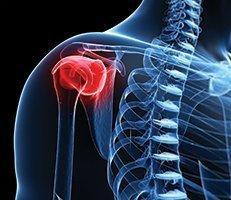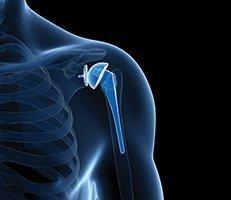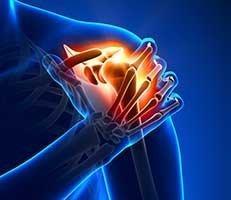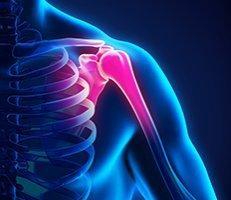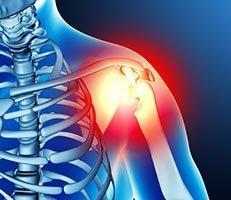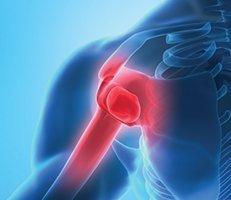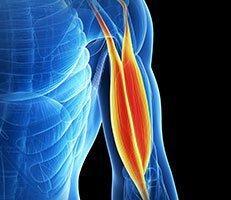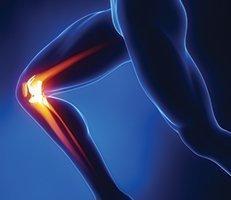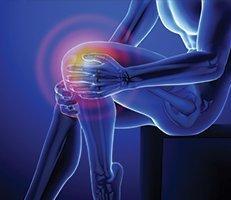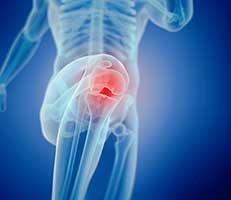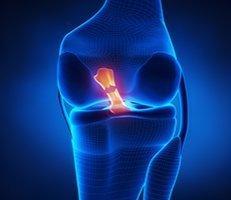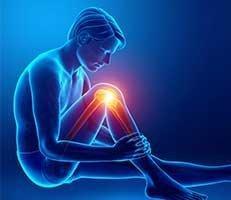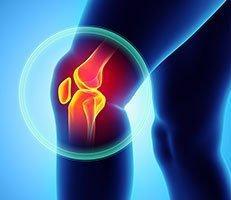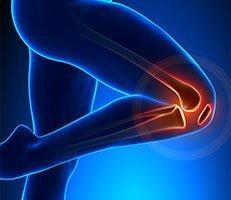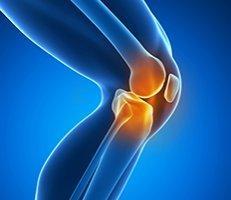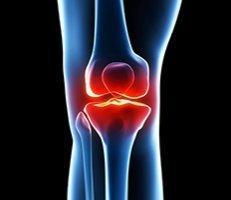Knee trauma is one of the most common reasons people visit the doctor. In fact, 10.4 million office visits a year are due to common knee injuries. The knee is a complex joint with many parts, making it vulnerable to a variety of injuries. Many knee injuries require only simple treatments, such as braces or exercises. Some injuries, however, are more severe and require surgery to correct.
This hinge joint is made up of five main components: bone, cartilage, ligaments, and tendons. In the case of a knee injury, more than one part of the knee can be injured. Knee anatomy consists of the following:
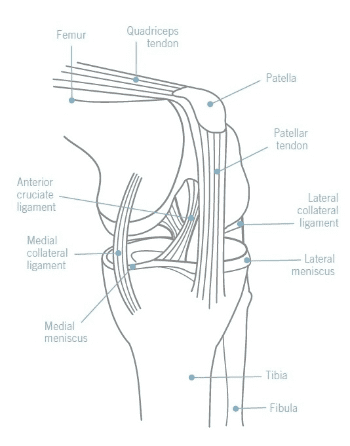 Bones: Three bones join to form your knee joint: your thighbone (femur), shinbone (tibia), and kneecap (patella).
Bones: Three bones join to form your knee joint: your thighbone (femur), shinbone (tibia), and kneecap (patella).- Articular Cartilage: This slippery substance helps your knee bones glide smoothly across each other as you bend or straighten your leg.
- Meniscus: These two pieces of cartilage act as “shock absorbers” between your femur and tibia. The meniscus helps to stabilize the joint.
- Ligaments: Bones are connected to other bones by ligaments. The ligaments in your knee keep it stable.
- Collateral Ligaments: These are found on the sides of your knee. They brace your knee in the event of unusual movement.
- Cruciate Ligaments: These are found inside your knee joint. They cross each other to form an “X” with the anterior cruciate ligament (ACL) in front and the posterior cruciate ligament (PCL) in back.
- Tendons: Muscles are connected to bones by tendons.
Please click here to learn more about this hinge joint.
Knee Injuries
The most common knee injuries include fractures and dislocations as well as sprains and tears of the ligaments. Pain and swelling are the most common symptoms of a knee injury. Your knee may also lock up. Many knee injuries cause instability– a feeling that the knee is “giving out.”
Fractures
The most common bone broken around the knee is the patella. Many fractures around the knee are caused by high impact to the knee, such as falls from high up or car accidents.
Dislocation
A dislocation occurs when the bones of this hinge joint become either completely or partially out of place. Dislocations can be caused by an abnormality in the structure of a person’s knee. Most often, knee dislocation is caused by impact to this hinge joint from an accident or sports-related injury.
Anterior Cruciate Ligament (ACL) Injuries
The anterior cruciate ligament is often injured during athletic activities. Soccer, football, and basketball players are more likely to injure their ACL. The ACL is injured by changing direction rapidly or jumping incorrectly. Half of all ACL injuries occur with another type of injury to the knee.
 PCL Injuries
PCL Injuries
The posterior cruciate ligament (PCL) is often injured from a blow to the front of the knee while the knee is bent. This often occurs in motor vehicle crashes and sports-related contact. Posterior cruciate ligament tears tend to be partial ligament tears with the potential to heal on their own.
Collateral Ligament Injuries
Often sports-related and a result of a direct blow, collateral ligament injuries occur less frequently than other knee injuries.
Meniscus Tears
Tears in the meniscus can occur when twisting, cutting, pivoting, or being tackled, so these injuries often occur during athletic activities. These tears can also occur as a result of arthritis or aging.
Tendon Tears
The quadriceps and patellar tendons can be stretched and torn. Falls, direct impact to the front of the hinge joint, and awkward landings are common causes of knee tendon injuries.
Treatment of Knee Injuries
When you first injure your knee, remember the RICE technique: Rest, Ice, Compression, and Elevation. These steps can help you on your way to a speedy recovery. Knee injuries can be treated in a variety of ways. More often, non-surgical treatments will be used to treat the injury before surgery is decided upon. Treatments include:
- Immobilization of the knee
- Physical therapy
- Anti-inflammatory medications
Surgical treatment may be necessary to restore full function to the knee and leg. In many cases, such as with ACL tears, surgery can be done arthroscopically using small incisions and instruments. Larger injuries may require open surgery, which gives surgeons better access to injured areas of the joint.

